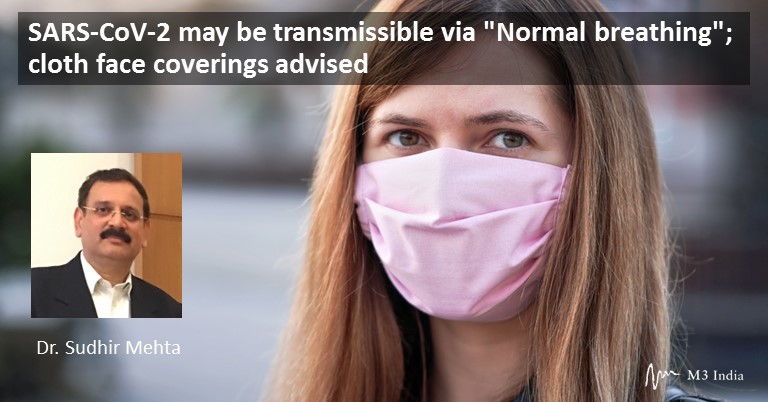Dr. Sudhir Mehta shares information on the use of appropriate face masks based on clinical findings which have important implications for control of COVID-19.
For our comprehensive coverage and latest updates on COVID-19 click here.
 SARS-CoV-2, the virus that causes novel coronavirus disease (COVID-19), may be aerosolised "from normal breathing," according to a letter by a committee of the National Academies of Sciences, Engineering, and Medicine.
SARS-CoV-2, the virus that causes novel coronavirus disease (COVID-19), may be aerosolised "from normal breathing," according to a letter by a committee of the National Academies of Sciences, Engineering, and Medicine.
The letter, sent to the White House Office of Science and Technology Policy, cites numerous studies indicating the presence of coronavirus in aerosols. In one, air samples collected more than 6 feet from two patients in COVID-19 isolation rooms tested positive for SARS-CoV-2 RNA. In another study, patients with seasonal coronaviruses (other than SARS-CoV-2) were randomized to exhale breath with or without surgical face masks on. Viral RNA was detected in 40% of aerosols and 30% of respiratory droplets collected from participants without a face mask — but in none collected from those wearing a mask.
The researchers with the latter study say the finding "has important implications for control of COVID-19."
Of note, the Academies letter cautions: "Studies that rely on [polymerase chain reaction] to detect the presence of viral RNA may not represent viable virus in sufficient amounts to produce infection. Nevertheless, the presence of viral RNA in air droplets and aerosols indicates the possibility of viral transmission via these routes."
Days after the letter was sent, the CDC advised Americans over age 2 years to wear cloth face coverings (not surgical masks) "in public settings where other social distancing measures are difficult to maintain especially in areas of significant community-based transmission." The agency cited increasing evidence for asymptomatic SARS-CoV-2 transmission and specified that the face coverings are meant to "help [keep] people who may have the virus and do not know it from transmitting it to others."
The CDC offers guidance on how to make and wear cloth masks on its website. Separately, a New York Times story examines the evidence on which materials might best filter out virus — think pillowcases and flannel pajamas, among others.
